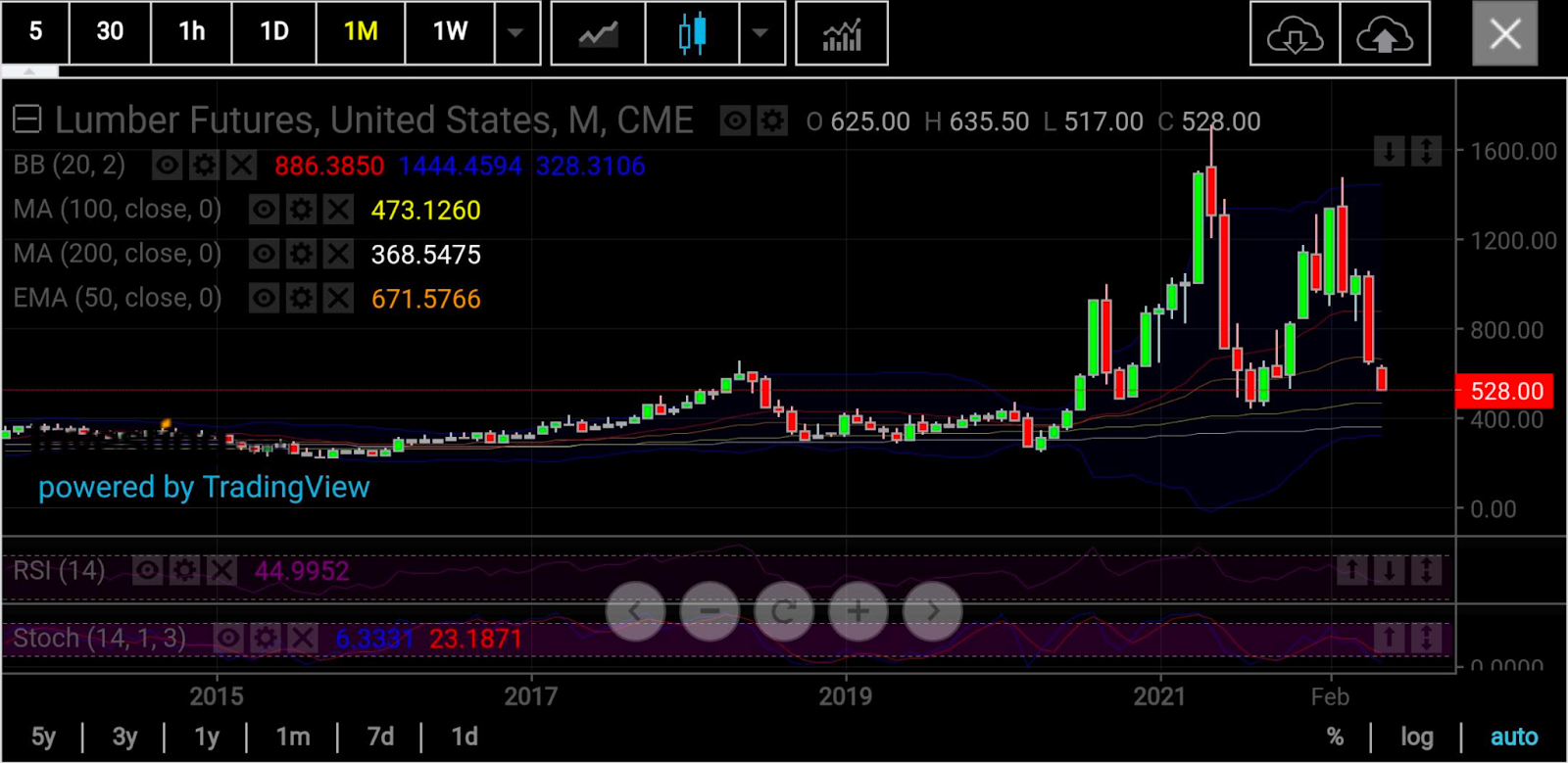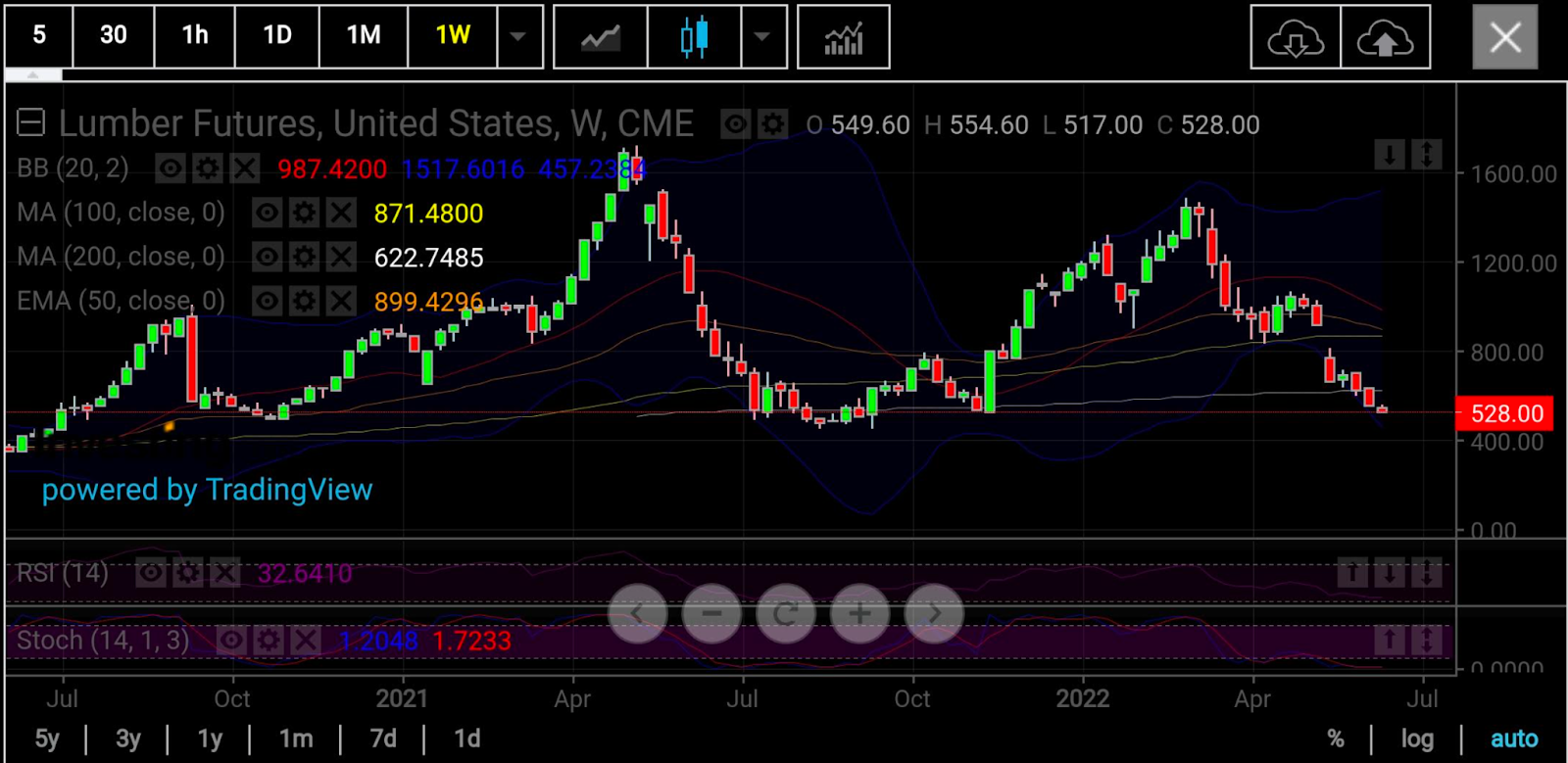US interest and mortgage rates are going only one way: up. Consequently, prices of lumber, one of the main ingredients for homebuilding in America, might go one way too: down.
The party seems to be over for lumber after it had rallied for six months till April last year as buyers jostled and outbid each other in an already super-crowded and expensive housing market, sending home prices even higher.
US home prices were up more than 20% in the year to March, despite a rise in interest and mortgage rates, a housing index from Standard & Poor's showed.
But home mortgages grew at their slowest pace in April, federal loan agency Freddie Mac said, reinforcing the notion that lending rates rising from aggressive Federal Reserve rate hikes have started throttling buying in America’s red-hot housing market.
With the Fed looking increasingly belligerent over rates after the Consumer Price Index for May showed inflation at a new 1981 high, property market executives have started admitting to what many already knew: There’s never been a worse time to buy a home in America.

All charts by skcharting.com
Lending credence to that thinking was research by Bank of America, published over the weekend by Markets Insider, which showed housing affordability has collapsed near to 1987 and 2005 lows.
Stung by last month’s hotter-than-expected CPI, the Fed is expected to hike rates by anywhere between 50 and 75 basis points (bps) when its policy-making Federal Open Market Committee meets Wednesday. That would follow FOMC hikes of 25 bps in March and 50 bps in May. Some economists are even betting on a 100-bps hike in July if inflation doesn’t retreat.
On the mortgage front, the traditional 30-year fixed mortgage rose above 5% earlier this year, reaching its highest since 2009. The average 30-year rate was below 3% a year ago. Consumers are also dealing with soaring inflation that is racking up the price of everyday goods from food to gas.
The triple whammy from soaring mortgage rates, Fed action, and inflation has been telling. In the past week alone, mortgage applications fell 7%, slipping 21% year-over-year, the data compiled by Insider showed. At the same time, demand for mortgage refinances dropped 6% over the past week, down 75% year-over-year. Consultancy Pantheon Macroeconomics even went as far as to say mortgage applications were in complete "meltdown."
Consumers' worries about their personal financial situations “reached an all-time high in May … and they expressed greater concern about job security," said Doug Duncan, Fannie Mae’s Senior Vice President and Chief Economist.
Added Duncan:
"Further, respondents' pessimism regarding home-buying conditions carried forward into May, with the percentage of respondents reporting it's a bad time to buy a home hitting a new survey high. The share reporting that it's 'easy to get a mortgage' also decreased across almost all segments.”
It’s unsurprising that investors are showing their concerns over the retrenchment in buying interest on a commodity directly related to housing: lumber.
Lumber prices have risen in only two of the near six months of this year, resulting in a 54% drop since the start of 2022. The steepest drop was in May, which alone accounted for a 37% drop or more than two-thirds of the year’s loss.
Ahead of Tuesday’s US futures trading, pricing for lumber was at $528 per-thousand-board-feet, after hitting a nine-month low of $517 on Monday.
Just a year earlier, prices hit a record high of $1,733 as pent-up demand for construction and home improvement after the pandemic fueled a speculative frenzy.
So, where could lumber be heading next?

Sunil Kumar Dixit, chief technical strategist at skcharting,com, said if the rut in lumber doesn’t stop, the building material could head below the $400 mark, its lowest since June 2020.
But a technical buyback was also likely after May’s excessive correction, he said.
Lumber has approached the horizontal support zone and its weekly stochastic reading of 1.20/1.72 indicates “extremely oversold conditions” that call for a bounce-back, targeting the 200-week Simple Moving Average of $622 and the 50-month Exponential Moving Average of $671, Dixit said.
“A consolidation above this zone can create enough momentum for a retest of the 100-week SMA of $871 and the 50-week EMA of $899,” he said.
Reaching these areas would also serve as “filling the runaway gap” of between $812 and $920, Dixit explained.
If the upside does not take charge, then the slide of another $160 was likely, he said, adding:
“As long as lumber prices lack buying strength above $670, expect prices to drop further down to the 100-month SMA of $473. The extended selloff can even expose the building material to the 200-month SMA of $368.”
Disclaimer: Barani Krishnan uses a range of views outside his own to bring diversity to his analysis of any market. For neutrality, he sometimes presents contrarian views and market variables. He does not hold a position in the commodities and securities he writes about.
